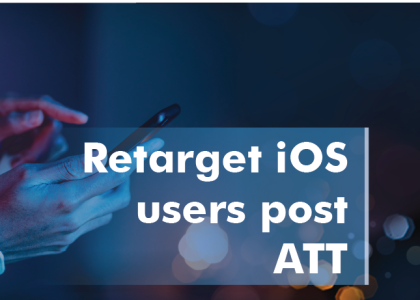As we step into 2023, new trends emerge in the mobile advertising landscape. If you’re wondering how mobile marketers will allocate their ad budgets this year, stay updated with the latest and greatest trends. This will help you make informed decisions and optimize your own ad spend.
Before we dive into the latest mobile ad spending trends, it’s important to address the current state of the economy. In 2022, inflation reached unprecedented levels, impacting all markets, including the mobile ecosystem. Apptopia’s data reveals that in 2022, the average price of in-app purchases (IAP) on the iOS App Store rose by 40% year-over-year, while the Google
Play store saw a 9% increase in the U.S. Although inflation has been a challenge, mobile ad spend is expected to grow in 2023 and
beyond. Based on recent data from eMarketer, mobile ad spend is expected to reach nearly $195 billion in 2023, indicating a year-over-year increase of 14.5% from the previous year’s mobile ad spend.
In light of the increased cost of in-app purchases (IAP), marketers can capitalize on the opportunity to invest in mobile app retargeting ad spend to drive additional sales and reduce acquisition costs. Here are three trends to keep in mind when planning your marketing budget for 2023:
1. Connected TV and Video
Connected TV (CTV) is gaining momentum and is expected to reach a tipping point in 2023. Streaming services are becoming more ad-friendly and are experimenting with alternative revenue models. As CTV campaigns become more consolidated and measurable, marketers can benefit from the growing user base of CTV devices like Roku, Apple TV, Google Chromecast, Amazon Fire TV, and Smart TVs. CTV is projected to capture a larger share of daily digital video time, indicating its potential to absorb
mobile market share.
2. Mobile Commerce
Mobile commerce has emerged as a powerful channel of revenue as consumers increasingly prefer to shop on their mobile devices. According to Square, almost all consumers want to connect with businesses through their mobile devices. The number
of mobile buyers in the US is expected to increase, with smartphones projected to capture the majority of m-commerce sales. Retail m-commerce sales are also expected to rise significantly, accounting for 40% of all retail e-commerce sales in the US.
3. Mobile Gaming
Mobile gaming is a growing and profitable segment of the mobile economy. In 2023, the number of mobile gamers worldwide is expected to surpass three billion for the first time. As the adoption of mobile gaming continues to grow, mobile gaming ad spend will also increase.
Half of today’s mobile gamers prefer an ad-supported model, according to Tapjoy. Therefore, marketers can consider leveraging this preference to engage with their target audience through in-game advertising.
TLDR?
Looking ahead to 2023, mobile ad spend is projected to grow despite inflation, reaching just under $195 billion with a 14.5% YoY increase. To make the most of this trend, app marketers should focus on retargeting ad spending in three key areas:
1. Connected TV and video:
Streaming services are becoming more ad-friendly, presenting a crucial opportunity for marketers to reach viewers across a growing range of devices. With CTV ads still out of reach for some, investing in video ads is also recommended.
2. Mobile commerce:
With smartphones expected to capture an increasing share of m-commerce sales, all app marketers should prioritise building relationships with consumers through mobile media. For retail apps in particular, this represents a
significant opportunity to engage and retain users.
3. Mobile gaming:
As the number of mobile gamers continues to rise, game developers should consider monetizing their apps through ads, given users’ preference for ad-supported models. For all app marketers, in-app advertising (IAA) in mobile games is
a valuable channel to explore.



